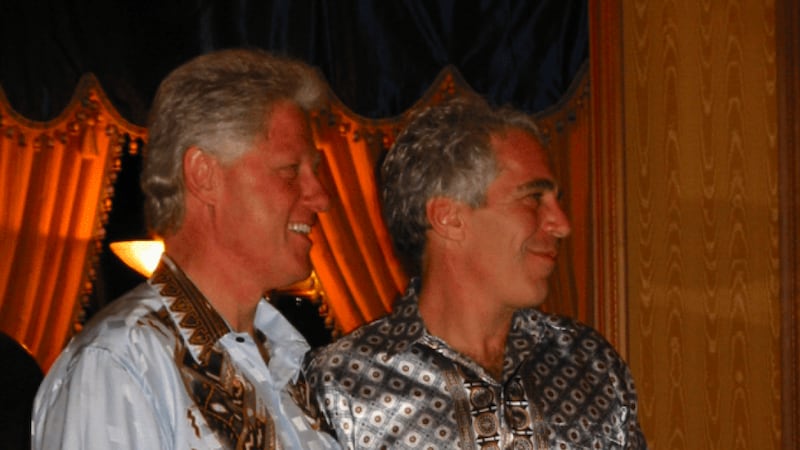Ask anyone to do a passable Joe Duffy impression and they won’t succeed without it. Listen to your mother having a phone conversation for any length of time and you won’t be able to avoid it. Try to say the word “desperate” in reaction to bad news while clutching at your craw and you’ll be doing it yourself. It’s called the Gaelic Gasp or “Irish mammy phone inhale”, and Irish people have been doing it since the Vikings first landed on our shores.
It was TikTok (what else?) that taught me that our very particular habit of breathing in sharply while speaking has a fancy name: ingressive pulmonic speech. It’s typically – though not exclusively – deployed for the words “yeah” and “yep” and their relations, including the “ayes” and “hais” of the north of the country. I’ve heard many a “sham” gasped inward in the hills of Donegal as a form of assent. I also favour an inbreath on my favourite word “now”, uttered when undertaking or completing almost any task.
The “pulmonic ingressive” or “ingressive phonation” is not unique to Ireland, though. It’s also widely heard in the Scandinavian countries, so its history on this island being tied to the arrival of the Vikings makes sense. It’s heard in Scotland, too, while on the east coast of Canada, with its large Irish and North Atlantic migrant population, it’s referred to as the “Gaelic gasp”.
We all do it. Even if you don’t think you do it, you do. It’s mostly associated with women though and is a defining trait of any send-up of a typical “Irish mammy”. In the late 1970s and early 1980s a man called Francis Joseph Peters conducted a study into the use of the “sympathetic ingressive affirmative in English and Scandinavian languages” and came to Dublin to carry out some of his research. In the capital he found that women were 10 times more likely to use ingressives than their male counterparts, and that male participants seemed to not use them at all when in conversation with other men. Women on the other hand were “yep”-ing and huffing away to each other. Other studies in Scandinavia and Newfoundland have yielded similar results. So, the Irish mammy impressions are bang on the money then.
Things larger family members and friends might want you to know this festive period
The council’s weekly planning alerts are a gift for busybodies like me
It’s not a reach to call myself one of Ireland’s foremost carvery experts. Here are my tips
People who weren’t even born when Italia ’90 fever swept the nation understand its impact
On their 2001 eponymous album Tenacious D, the comedy rock duo (actor Jack Black and Kyle Gass) features a track called Inward Singing in which Jack Black claims to have invented a way of vocalising that “makes non-stop rocking possible”. He goes on to demonstrate singing on the inhale as well as the exhale.
It’s suggested that it could be down to the biology of the vocal tract with the smaller pharynx and larynx of the female better able to utter a “go ‘way” in response to the news that Kevin has run off with the young fellah from Circle K
Sure, we’ve been doing that forever. If a senior infants teacher is getting the class to count to 10, she’s not going to stop the count just because she’s run out of breath. She’s going to start as normal with “One, two, three, four, five ...” and then continue the count as she inhales: “ ... six, seven, eight, nine, ten”. Why? Because Irish people love talking, and we’re not going to let some pesky breathing get in the way.
Ingressive pulmonic speech is evident all over the world. France, parts of Africa, Japan, Indigenous America, Aboriginal Australia – talking or agreeing on the inbreath has been reported in all these places and more. At least one expert has suggested that because it’s also evident in the calls of monkeys and apes it may have a biological and evolutionary basis, rather than being shared exclusively through migration and contact. It’s even been compared to the purring of our feline friends, finally bringing an answer to that age old question: “Who’s ‘she’? The cat’s mother?”
Joe Duffy uses the pulmonic ingressive – most likely unconsciously – to create intimacy between himself, his Liveline guests and the listener. Research on the linguistic phenomenon notes that it is most often used in this way, in intimate conversations and storytelling and furtive gossip delivery.
Again and again, it comes back to women though, whether it be Inuit throat games involving two women in a kind of pulmonic ingressive contest, or the Tohono O’odham females of Arizona and the Sonoran Desert, some of whom only speak ingressively.
It’s suggested that it could be down to the biology of the vocal tract with the smaller pharynx and larynx of the female better able to utter a “go ‘way” in response to the news that Kevin has run off with the young fellah from Circle K.
Or is it that women are simply more economical with their time, and are committed to “non-stop rocking” a la Jack Black and Tenacious D? I’m going to answer that with a simple “yep”, repeated five times on the inhale.















